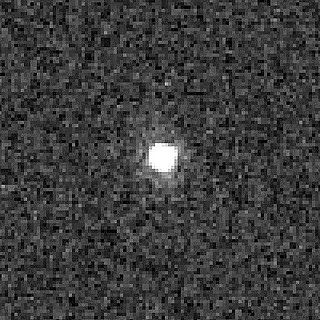
(90568) 2004 GV9 is a trans-Neptunian object that was discovered on April 13, 2004 by NEAT. It has been listed as a cubewano by the Minor Planet Center. It was discovered on 13 April 2004 by NEAT. It has been observed forty-seven times, with precovery images back to 1954. The object has an orbital period of 273.88 years. Its maximum possible distance from the Sun (aphelion) is 45.62 AU, and its closest (perihelion) is 38.7 AU, and currently 39.7 AU from the sun. It has an inclination of 21.9718, and eccentricity of 0.082.

(55565) 2002 AW197 is a classical, non-resonant trans-Neptunian object from the Kuiper belt in the outermost region of the Solar System, also known as a cubewano. With a likely diameter of at least 700 kilometers (430 miles), it is approximately tied with 2002 MS4 and 2013 FY27 (to within measurement uncertainties) as the largest unnamed object in the Solar System. It was discovered at Palomar Observatory in 2002.

(208996) 2003 AZ84 is a trans-Neptunian object with a possible moon located in the outer regions of the Solar System. It is approximately 940 kilometers across its longest axis, as it has an elongated shape. It belongs to the plutinos – a group of minor planets named after its largest member Pluto – as it orbits in a 2:3 resonance with Neptune in the Kuiper belt. It is the third-largest known plutino, after Pluto and Orcus. It was discovered on 13 January 2003, by American astronomers Chad Trujillo and Michael Brown during the NEAT survey using the Samuel Oschin telescope at Palomar Observatory.
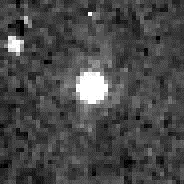
(145452) 2005 RN43, also written as (145452) 2005 RN43, is a classical Kuiper belt object. It has an estimated diameter of 679+55
−73 km. It was discovered by Andrew Becker, Andrew Puckett and Jeremy Kubica on 10 September 2005 at Apache Point Observatory in Sunspot, New Mexico. Brown estimates that it is possibly a dwarf planet.

79360 Sila–Nunam, provisional designation 1997 CS29, is a cold classical Kuiper belt object (cubewano) and binary system made up of components of almost equal size, called Sila and Nunam, orbiting beyond Neptune in the Solar System. The name of the system is the combined names of the two bodies, Sila and Nunam.
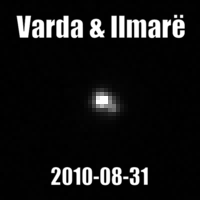
174567 Varda (provisional designation 2003 MW12) is a binary trans-Neptunian planetoid of the resonant hot classical population of the Kuiper belt, located in the outermost region of the Solar System. Its moon, Ilmarë, was discovered in 2009.

(84922) 2003 VS2 is a trans-Neptunian object discovered by the Near Earth Asteroid Tracking program on 14 November 2003. Like Pluto, it is in a 2:3 orbital resonance with Neptune and is thus a plutino. Analysis of light-curve suggests that it is not a dwarf planet.
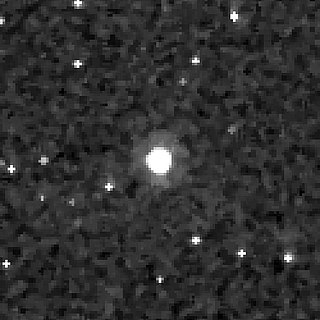
(119951) 2002 KX14, also written as 2002 KX14, is a medium-sized trans-Neptunian object (TNO) residing within the Kuiper belt. It was discovered on 17 May 2002 by Michael E. Brown and Chad Trujillo.
(24835) 1995 SM55, provisional designation 1995 SM55, is a trans-Neptunian object and member of the Haumea family that resides in the Kuiper belt, located in the outermost region of the Solar System. It was discovered on 19 September 1995, by American astronomer Nichole Danzl of the Spacewatch program at Kitt Peak National Observatory near Tucson, Arizona, in the United States. It measures approximately 200 kilometers in diameter and was the second-brightest known object in the Kuiper belt, after Pluto, until 1996 TO66 was discovered.

42355 Typhon (; prov. designation: 2002 CR46), is a scattered disc object that was discovered on February 5, 2002, by the NEAT program. It measures 162±7 km in diameter, and is named after Typhon, a monster in Greek mythology.
(35671) 1998 SN165, prov. designation: 1998 SN165, is a trans-Neptunian object from the Kuiper belt located in the outermost region of the Solar System. It was discovered on 23 September 1998, by American astronomer Arianna Gleason at the Kitt Peak National Observatory near Tucson, Arizona. The cold classical Kuiper belt object is a dwarf planet candidate, as it measures approximately 400 kilometers (250 miles) in diameter. It has a grey-blue color (BB) and a rotation period of 8.8 hours. As of 2021, it has not been named.
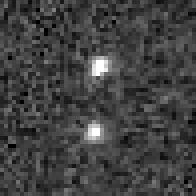
88611 Teharonhiawako, or (88611) Teharonhiawako–Sawiskera as a binary, is a trans-Neptunian object and a member of the cold classical Kuiper belt, measuring about 220 km in diameter. It is a binary object, with a large companion named Sawiskera, which at 126 km in diameter is about two-thirds the size of its primary.

(455502) 2003 UZ413, also written as 2003 UZ413, is a trans-Neptunian object (TNO) with an absolute magnitude of 4.38. It is in a 2:3 orbital resonance with Neptune, thus it is classified as a plutino. There are indications it may be dense enough to be a dwarf planet. It was given the minor planet number 455502 on 22 February 2016.

(145480) 2005 TB190, provisionally known as 2005 TB190, is a trans-Neptunian object (TNO) with an absolute magnitude of 4.4.

66652 Borasisi, or as a binary (66652) Borasisi-Pabu, is a binary classical Kuiper belt object. It was discovered in September 1999 by Chad Trujillo, Jane X. Luu and David C. Jewitt and identified as a binary in 2003 by K. Noll and colleagues using the Hubble Space Telescope.
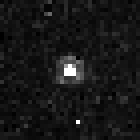
(82075) 2000 YW134, provisional designation: 2000 YW134, is a resonant trans-Neptunian object and binary system, located in the outermost region of the Solar System. It was discovered on 26 December 2000, by astronomers with the Spacewatch survey at Kitt Peak Observatory near Tucson, Arizona. The reddish object stays in a rare 3:8 resonance with Neptune. A smaller companion was discovered by the Hubble Space Telescope in October 2002. As of 2021, neither the primary body nor its satellite have been named.
(444030) 2004 NT33 is a classical trans-Neptunian object and possible dwarf planet of the Kuiper belt in the outermost region of the Solar System, approximately 450 kilometers in diameter. It was discovered on 13 July 2004, by astronomers at Palomar Observatory, California, United States.
(144897) 2004 UX10 is a Kuiper-belt object. It has a diameter of about 360 kilometres (220 mi) and was discovered by Andrew Becker, Andrew Puckett and Jeremy Kubica on 20 October 2004 at Apache Point Observatory in Sunspot, New Mexico. The object is classified as a cubewano. It is near a 2:3 resonance with Neptune.
(508869) 2002 VT130, provisional designation 2002 VT130, is a trans-Neptunian object and binary system from the classical Kuiper belt, located in the outermost region of the Solar System. It was discovered by American astronomer Marc Buie at Kitt Peak Observatory on 7 November 2002. The primary measures approximately 324 kilometers (201 miles) in diameter.

(524366) 2001 XR254, provisional designation 2001 XR254, is a trans-Neptunian object and binary system from the classical Kuiper belt, located in the outermost region of the Solar System. The cubewano belongs to the cold population and measures approximately 171 kilometers (110 miles). It was first observed on 10 December 2001, by astronomers at the Mauna Kea Observatory, Hawaii. Its 140-kilometer sized companion was discovered by the Hubble Space Telescope in June 2006.















